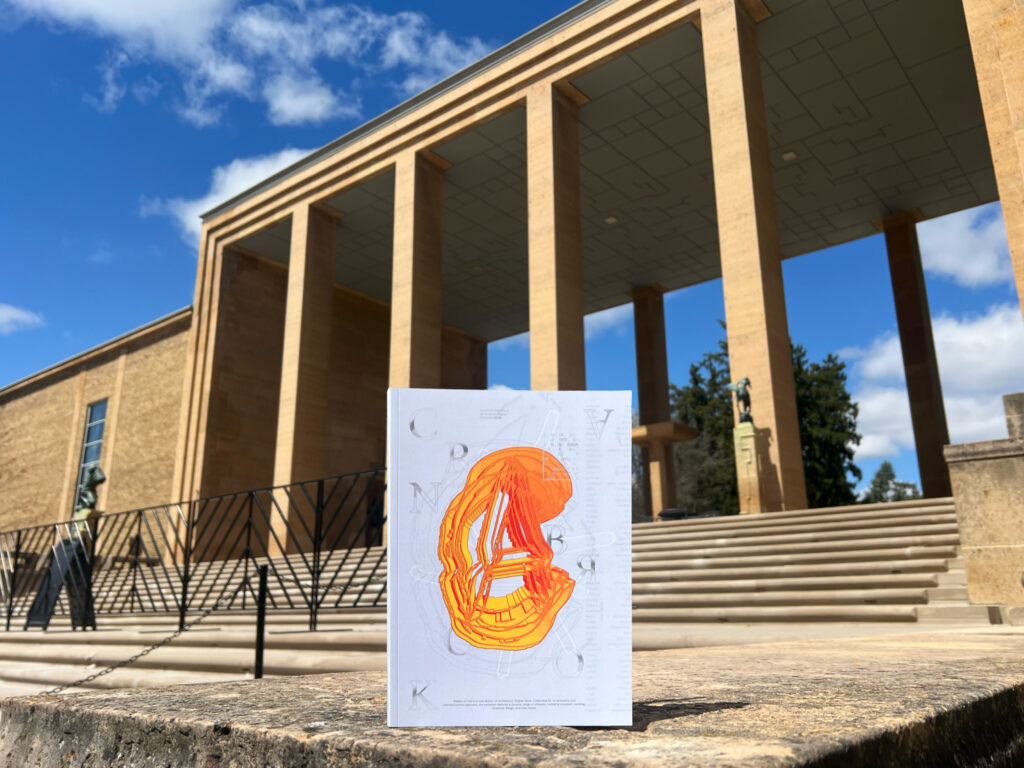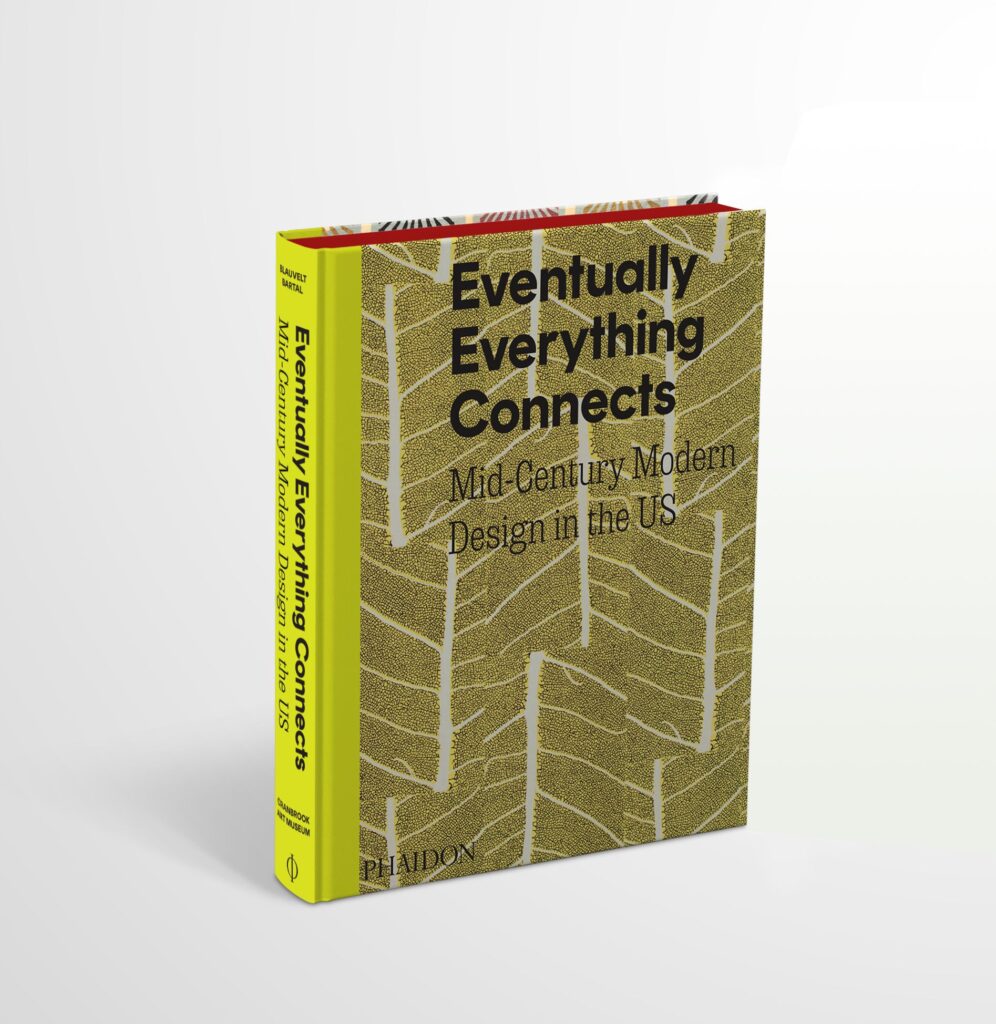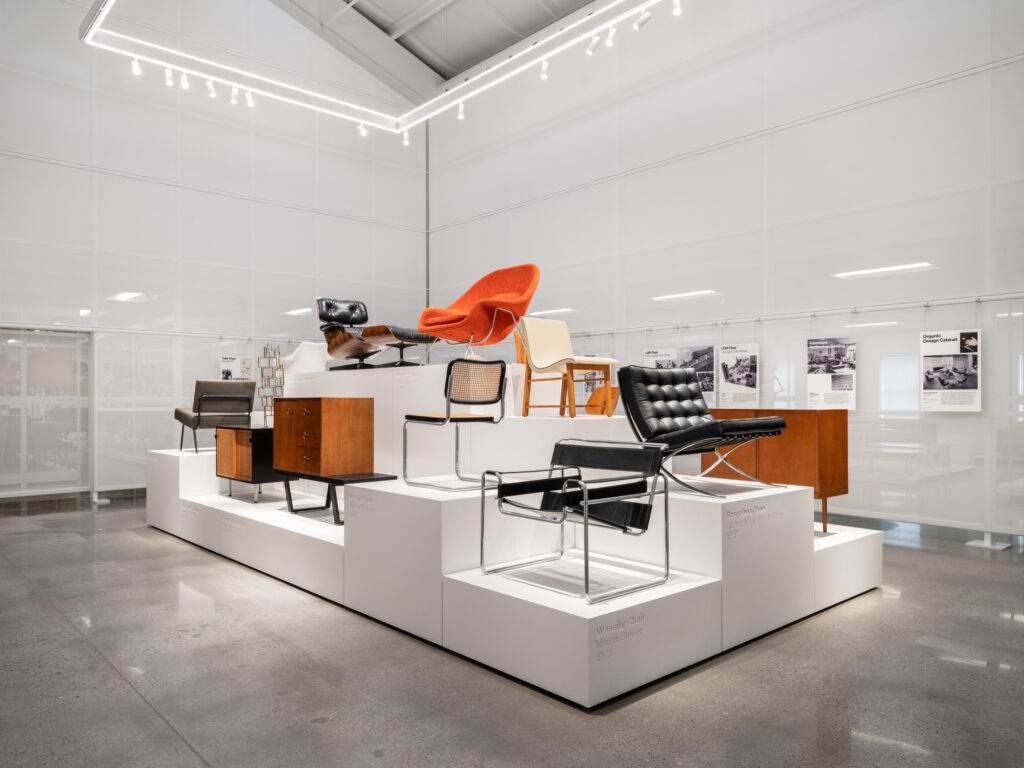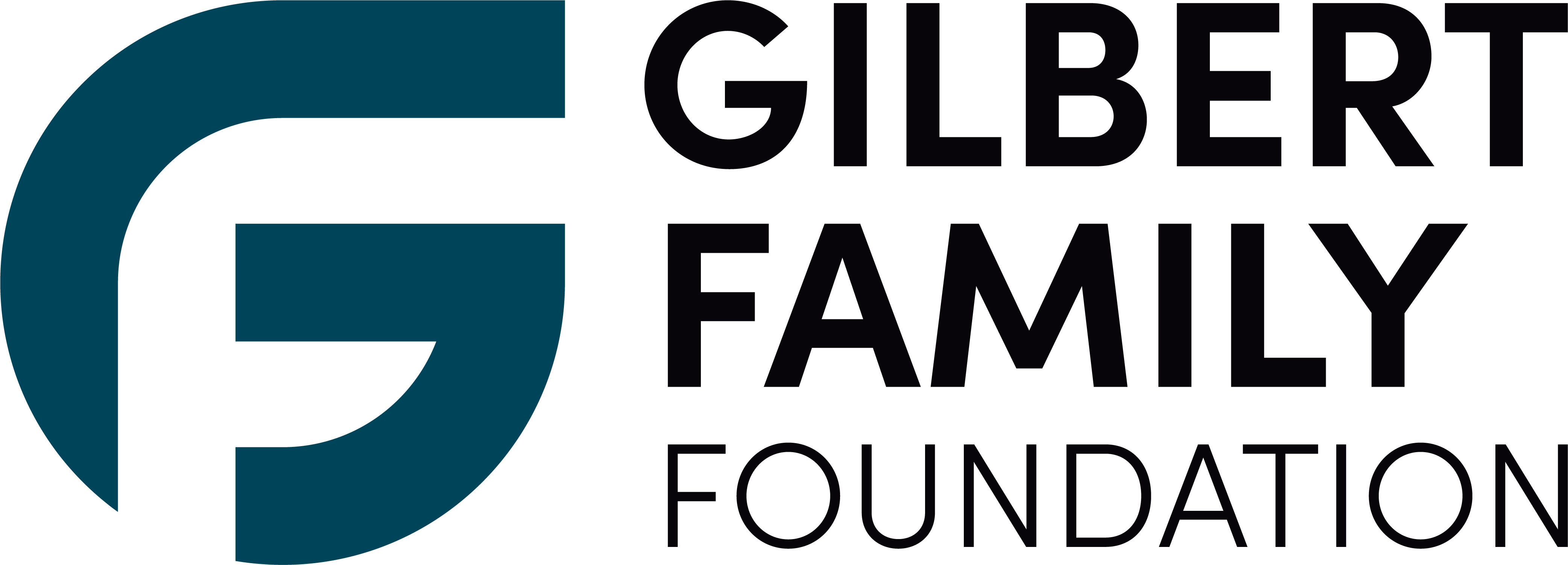Pop art emerged in Britain and the United States in the late 1950s, becoming a worldwide phenomenon through the 1960s and 1970s. Taking popular culture as a source of inspiration, Pop art often employs bold colors; commercial design, and printing techniques; everyday, sometimes banal, subject matter, or conversely, images from celebrity life and mass media. Pop art had mass appeal, influencing not only artists and designers but also the mass culture itself.
Pop Art Pop-Up features works drawn from Cranbrook Art Museum’s permanent collection, showcasing the work of iconic Pop artists such as Jim Dine, Roy Lichtenstein, Robert Rauschenberg, Jasper Johns, Andy Warhol, Claes Oldenburg, and more. The exhibition also underscores the enduring influence of Pop in the work of later artists and designers like Ed Rossbach, Terence Main, and Keith Haring, and in the work of contemporary artists such as KAWS.
Works on view in Pop Art Pop-Up pair with this season’s Wainger Workshops, artist-led sessions exploring collage, printmaking, and instant photography on select winter Thursdays.
Pop Art Pop-Up is curated by Cranbrook Art Museum Director Andrew Satake Blauvelt with the assistance of Kat Goffnett, Associate Curator of Collections, and Katy Kim, the Jeanne and Ralph Graham Curatorial Fellow. Pop Art Pop-Up is indebted to the significant gifts from Dr. John and Rose Shuey, the Andy Warhol Foundation for the Visual Arts, the Estate of George Francoeur and Gerald Earls, and Kari and Nicholas Coburn, among others.
Cranbrook Art Museum is generously supported by the Fred A. and Barbara M. Erb Foundation, the Kresge Foundation, the MASCO Foundation, the DeRoy Testamentary Foundation, the Governors of Cranbrook Academy of Art and Cranbrook Art Museum, members of the Museum Committee, and ArtMembers at Cranbrook.
This project is supported by the Robert Rauschenberg Foundation.
In 1974, Cary Loren, Mike Kelley, Jim Shaw, and Niagara joined forces to form Destroy All Monsters (DAM), an anti-rock band and artist collective. Named after a Japanese monster movie, the group was formed as an outlet for the young creatives in Ann Arbor, Michigan, to explore their rebellious interests in pop culture, film, art, and music at a time when, according to Loren, “a sense of gloom, disaster, and apocalypse, mixed with doses of anarchy, comedy, and absurdity kept us together.”
Over the past half-century Destroy All Monsters has lived through an array of evolutions spurred on by line-up changes, creative differences, and changes of focus as the core four members have oscillated between this project and solo practices. DAM projects have included noise and rock music, Xerox art, avant-garde films, cutting-edge zines, and exhibitions in the United States, Europe, and Japan.
Mythic Chaos: 50 Years of Destroy All Monsters traces the group’s lineage from the early 1970s through today, featuring key moments in the collective’s creative arc. This exhibition explores the group’s source inspirations, including formative moments at God’s Oasistheir early practice space and the title of their first Xerox fliers. In addition, Mythic Chaos will feature iconic posters, zines, photographs, collages, films, drawings, and banners selected from the DAM archive from 1974 onward. A new iteration of the collective’s “blob” sculpture, The Crème Filled Palace, will be created at Cranbrook. Mythic Chaos aims to not only illustrate the trajectory of Destroy All Monsters, but to look at its underpinnings and unveil the often fringe cultural mythos that brought the group together in the post-hippie, pre-punk era.
Mythic Chaos: 50 Years of Destroy All Monsters is organized by Cranbrook Art Museum and curated by Lyla Catellier, Curator of Public Programming and Kat Goffnett, Associate Curator of Collections, with the assistance of Cary Loren.Haas Brothers: Uncanny Valley is the first mid-career survey devoted to artists and twin brothers Nikolai and Simon Haas (b. 1984, Austin, Texas), who founded their collaborative studio in Los Angeles in 2010. The duo is known for their artistic practice that cross-pollinates the fields of art, craft, design, and technology.
The brothers’ materially rich work reveals a frenzied creative imagination combined with a right-brain inventiveness—a process they refer to as “problem-solving fantasies.” Much of their art is a continuation of fictive characters, fantastic creatures, and other-worldly realms often filtered through cultural references and technological aesthetics of growing up in the 1990s and early aughts. Often irreverent and always meticulous, their artworks explore themes related to nature, fantasy, the subconscious, and the human experience. Conceptually, they embrace the surrealistic, the animistic, and the zoomorphic, for instance, to conjure alternative realms.
The exhibition includes examples from the major bodies of work that the artists have been engaged with over the last 15 years presented through striking vignettes that bring to life the Haas Brothers’ “worlds.” It will also show how these works and worlds are made by highlighting their processes, material explorations, and innovations.
The Haas Brothers have exhibited their work widely throughout the United States and abroad. They have been the subject of solo exhibitions at the Nasher Sculpture Center; Katonah Museum of Art; Bass Museum of Art; Savannah College of Art and Design Museum of Art; and have been featured in numerous group exhibitions. In 2019, they were recipients of the YoungArts Foundation Arison Award. Their work is in the permanent collections of the Rhode Island School of Design Museum of Art; the Cooper Hewitt, Smithsonian Design Museum; and the Metropolitan Museum of Art.
The exhibition will be accompanied by a 256-page monograph, available from our shop, the most comprehensive treatment of the Haas Brothers’ career to date, with new curatorial insights and co-published by Cranbrook Art Museum and Monacelli Press with the assistance of the Nasher Sculpture Center.
The exhibition will tour to venues across the United States, including the Museum of Arts and Design (MAD), New York, April 11, 2026 – September 13, 2026. Other venues will be announced at a later date.

The innovative work from the next generation of architects, artists, and designers will be on display at the 2025 Graduate Degree Exhibition of Cranbrook Academy of Art. The Degree Exhibition showcases pieces that are the culmination of two years of studio work from a diverse group of graduates as they launch their careers.

Purchase the 2025 Graduate Degree Exhibition Book in person and online while supplies last. Designed by Mike Michalski (CAA 2D Design 2025) and Daniel Lee (CAA 2D Design 2025).
ArtMembers save 15% with code “ArtMem”.
Not an ArtMember? Join today!
This large-scale survey of one of the most important and persistent movements of modern design in the United States in the twentieth century shines a light on Cranbrook’s pivotal role in its development and the contributions of additional women, LGBTQ+ individuals, and designers of color during this period. Based on the famous quote by Cranbrook alumnus and teacher Charles Eames, “Eventually everything connects: people, ideas, objects,” the exhibition contains some 200 works by nearly 100 artists, architects, and designers that explore the multitude of relationships between these three fundamental pillars. The exhibition features many new additions to Cranbrook’s collection of important furniture, textiles, and furnishings from the period.
This expansive exhibition is accompanied by an equally expansive 400-plus-page book published with Phaidon and available from our shop (pre-order, shipping in July) that contains new insights by more than 25 historians.


Special Event: MillerKnoll Day Trips
Get the first look at the MillerKnoll Archives in Holland, MI. Join us for Day Trips from Cranbrook Art Museum with Bridget Bartal, our MillerKnoll Curatorial Fellow. You’ll take a private, behind-the-scenes tour of:
The MillerKnoll Archives — the new space on the campus of the company’s Design Yard that houses the combined archives of Herman Miller, Knoll, and other brands in the collective.
The Test Lab — where today’s innovations are crafted and refined so they can be passed down to future generations.
The iconic Mainsite Manufacturing Facility — designed by George Nelson and A. Quincy Jones
Each tour is limited to 20 guests. Lunch and snacks will be provided.
See each date for details. The cost per guest is $250, RSVP required:
July 18, 2025 – SOLD OUT
August 1, 2025 – SOLD OUT
August 15, 2025 – SOLD OUT
In 2016, Cranbrook Art Museum inaugurated a new permanent collection devoted to celebrating and preserving the work of artists and designers in the metro Detroit area—its first new collection in decades. At the same time, the Art Museum dedicated funds to acquire more works by women, artists of color, and LGBTQ+ identified individuals in a project to diversify its permanent collection. Designed to acknowledge the long-standing history of artists who have called Detroit home and the area’s rich and diverse community of practitioners, the Detroit Collection is particularly focused on art from the 1960s to the present in a variety of media. How We Make the Planet Move takes its title from a poem by Detroit-born poet, jessica Care moore, A Poem Saved My Life: An Homage to Detroit. Cranbrook Art Museum’s Detroit Collection itself aims to hold the art of Detroit up, giving it the attention and reverie it has rightfully earned. This landmark exhibition represents the first public debut of works from this collection, which has been amassed through generous gifts, museum purchases, and commissions.
How We Make the Planet Move is the inaugural exhibition in Cranbrook’s Detroit Collection series as the museum continues to grow to include more artists working in and around the city.
Virtual Tour of How We Make the Planet Move: The Detroit Collection Part I
The Detroit Collection is organized by Cranbrook Art Museum and curated by Kat Goffnett, Associate Curator of Collections, with Laura Mott, Chief Curator, and Andrew Satake Blauvelt, Director. The exhibition is generously supported by the Gilbert Family Foundation, the DeRoy Testamentary Foundation, Jennifer and Dan Gilbert, the Tom Gores Foundation, Kim and Mark Reuss, the George Francoeur Art Museum Exhibition Fund, Michigan Arts and Culture Council, Media Genesis, Andrew L. and Gayle Shaw Camden, Marc Schwartz and Emily Camiener, and ArtMembers of Cranbrook Art Museum.
Toshiko Takaezu is one of the most accomplished artists to work with clay in the twentieth and twenty-first centuries, acclaimed for her vessels that she treated like canvases for expressive abstraction. Born in Hawai‘i to Okinawan immigrant parents, Takaezu came to study and eventually teach in the summer program at Cranbrook Academy of Art between 1951-1956. This major exhibition centered on her life and work is the first nationally touring retrospective of Takaezu’s work in twenty years.
Worlds Within is a chronological retrospective that charts the development of Takaezu’s hybrid practice over seven decades, documenting her early student work in Hawai‘i and at Cranbrook through her years teaching at the Cleveland Institute of Art and later at Princeton University. To represent this evolution, the show will present a series of installations loosely inspired by ones that Takaezu created in her own lifetime: from a set table of functional wares from the early 1950s to an immersive constellation of monumental ceramic forms from the late 1990s to early 2000s. The exhibition will include a vast collection of ceramic sculptures including her signature “closed forms,” Moons, Garden Seats, Trees, and select monumental works from her late masterpiece, the Star Series. It will also feature a broad selection of her vibrant and gestural acrylic paintings and weavings, many of which have rarely been seen. Sound will also play an important role in this exhibition as many of Takaezu’s closed ceramic forms contain unseen “rattles”.
To coincide with the exhibition, a new monograph was published in association with Yale University Press, for which Cranbrook Art Museum contributed new scholarship. This timely exhibition and publication arrive just as Takaezu’s work is receiving renewed critical attention as one of the great modern abstractionists.
Virtual Tour of Toshiko Takaezu: Worlds Within
Toshiko Takaezu: Worlds Within is organized by The Isamu Noguchi Foundation and Garden Museum, New York, with assistance from the Toshiko Takaezu Foundation and the Takaezu family, and curated by Glenn Adamson, Kate Wiener, and Leilehua Lanzilotti. The exhibition was conceived and developed with former Noguchi Museum Senior Curator Dakin Hart.
This exhibition would not have been possible without the leadership support of the Terra Foundation for American Art and the Henry Luce Foundation.
The Cranbrook Art Museum presentation is generously supported by the Gilbert Family Foundation, the George Francoeur Art Museum Exhibition Fund, and Karen and Drew Bacon.

Subtleism: Neha Vedpathak with Agnes Martin will showcase a new body of work by Detroit-based abstractionist Neha Vedpathak alongside important canonical works by Agnes Martin, the great American painter associated with Minimalism and a principal influence on Vedpathak’s practice.
Born in India, Vedpathak has spent the past decade in Detroit developing a unique technique of manipulating paper that she calls “plucking.” The time-consuming, labor-intensive process consists of creating countless incisions in painted, hand-made Japanese mulberry paper, known for its long, strong fibers. Her work highlights questions of materiality, texture, and mark-making. Vedpathak views the act of plucking to be resonant with meditation as the creation of work involves a repetitive, ritualistic, and durational act for long periods of time—sometimes multiple weeks for larger pieces. In her work, Vedpathak asks the question, “When does the mundane become magical?”
Vedpathak perceives many parallels, alongside the meditative aspect of creation, between her practice and that of Agnes Martin. While writers have previously categorized her work as Minimalist, Vedpathak personally describes herself as a “Subtleist”. Martin likewise rejected the categorization under the umbrella of Minimalism, considering herself an Abstract Expressionist. The title of the exhibition—Subtleism—pushes back on the categorization of previous art historiography while allowing a contemporary artist to analyze Martin’s work through a different lens.
Virtual Tour of Subtleism: Neha Vedpathak with Agnes Martin
Subtleism: Neha Vedpathak with Agnes Martin is organized by Cranbrook Art Museum and curated by Laura Mott, Chief Curator, and Andrew Ruys de Perez, the Jeanne and Ralph Graham Curatorial Fellow. The exhibition is generously supported by the Gilbert Family Foundation, the George Francoeur Art Museum Exhibition Fund, and ArtMembers of Cranbrook Art Museum
A Modernist Regime: The Contemporary Cuban Lens
As part of A Modernist Regime: The Contemporary Cuban Lens, the solo exhibition Marco Castillo: The Hands of the Collector features several bodies of work by the artist and prolific collector of Cuban mid-century design that he initially started to amass while working as part of the artist collective Los Carpinteros (1992–2018). Castillo incorporates the aesthetics derived from Cuban modernism in his practice to resurrect Cuban design history and to critique the oppression by the government against artists, designers, and intellectuals in Cuba. Many of the artworks are named after modernist Cuban architects and designers in homage to this forgotten generation of creators, including Gonzalo Córdoba, María Victoria Caignet, Iván Espín, Reinaldo Togores, Heriberto Duverger, Clara Porset, and Félix Beltrán—all of whom are featured in the companion historical exhibition, also on view at the museum, A Modernist Regime: Cuban Mid-Century Design. Castillo’s work often references the aerial view of the kind of plans that interior designers use to layout a room, but here the objects are in turbulence. The work is a freeze-frame of deconstruction, a reference to the demise of autonomy of Cuban artists and the loss of creative life under a dictatorship.
Virtual Tour of Marco Castillo: The Hands of the Collector
A Modernist Regime: Cuban Mid-Century Design and A Modernist Regime: The Contemporary Cuban Lens are organized by Cranbrook Art Museum and curated by Abel González Fernández and Laura Mott, Chief Curator, with Andrew Satake Blauvelt, Director, and Andrew Ruys de Perez, the Jeanne and Ralph Graham Curatorial Fellow. The exhibitions are generously supported by the Gilbert Family Foundation, the Andy Warhol Foundation for the Arts, the National Endowment for the Arts, the Clannad Foundation, the George Francoeur Art Museum Exhibition Fund, Marc Schwartz & Emily Camiener, Karen & Drew Bacon, Jennifer & Brian Hermelin, Kelsey & Evan Ross, and ArtMembers of Cranbrook Art Museum.Media Inquiries:
Julie Fracker
Director of Communications
Office: 248.645.3329
jfracker@cranbrook.edu
As part of A Modernist Regime: The Contemporary Cuban Lens, the exhibition Cuba Dispersa (Cuba Dispersed) features six artists and designers—Julío Llopíz Casal, Liliam Dooley, Anet Melo Glaria, Celia González Álvarez, Hamlet Lavastida, and Ernesto Oroza—that respond to the current conditions in Cuba. As of now, none of the artists live in Cuba, with some forced into exile. Over the past few years, the Cuban government has launched a campaign to suppress the artistic community and control creative production through official legislation, such as Decree 349, in an attempt to quell the outpouring of anti-government artwork and music. The exhibition features six new commissions that use their individual practices to mine these design and material histories to elucidate the past and imagine potential futures. As co-curator Abel González Fernández explains, “When looking at Cuba, we must recognize our fascinating, tragic, elegant, and complex Cuban history. What are we going to keep? We may not have a land for all Cubans to be reunited now because of the dictatorship, but we have a shared memory that unites us.”
Cuba Dispersa (Cuba Dispersed) and Marco Castillo: The Hands of the Collector are complementary presentations that serve as a contemporary response to the historical survey, A Modernist Regime: Cuban Mid-Century Design, also on view at the museum.
Virtual Tour of Cuba Dispersa (Cuba Dispersed)
A Modernist Regime: Cuban Mid-Century Design and A Modernist Regime: The Contemporary Cuban Lens are organized by Cranbrook Art Museum and curated by Abel González Fernández and Laura Mott, Chief Curator, with Andrew Satake Blauvelt, Director, and Andrew Ruys de Perez, the Jeanne and Ralph Graham Curatorial Fellow. The exhibitions are generously supported by the Gilbert Family Foundation, the Andy Warhol Foundation for the Arts, the National Endowment for the Arts, the Clannad Foundation, the George Francoeur Art Museum Exhibition Fund, Marc Schwartz & Emily Camiener, Karen & Drew Bacon, Jennifer & Brian Hermelin, Kelsey & Evan Ross, and ArtMembers of Cranbrook Art Museum.Media Inquiries:
Julie Fracker
Director of Communications
Office: 248.645.3329
jfracker@cranbrook.edu

Copyright © 2025 Cranbrook Art Museum. All rights reserved. Created by Media Genesis.